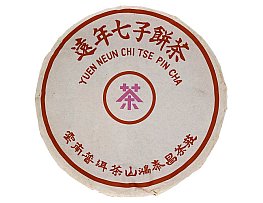Чай Готу Кола
Центелла азиатская, широко известная как Готу Кола, произрастает в болотистых тропических районах Таиланда, Индии, Пакистана, Шри-Ланки, Мадагаскара и Южной Африки. В некоторых странах свежие листья этого растения используют для приготовления салатов и карри, а сухую траву заваривают как чай, часто смешивая с женьшенем или Гинкго Билоба.
В Таиланде Готу Колу называют Bai Bua Bok (บัวบก). Здесь свежее растение используют для приготовления сладкого холодного сока. Этот зеленый напиток (Nam Bai Bua Bok) можно найти на любом уличном рынке по всей стране, его обычно продают вместе с холодными чаями из хризантемы и розеллы.
У нас продается сушеная трава Готу Кола. Ее можно заварить как отдельный напиток, смешать с другими травами или добавить в чай. Чай из сушеных листьев центеллы имеет травянистый, солоновато-пряный вкус.
Как приготовить чай из Готу Колы
Готу Колу можно заварить кипятком, но мы рекомендуем нагреть воду не более 90 градусов.
Ее листья довольно мягкие и легко завариваются в керамической кружке с крышкой. Положите 2-3 грамма сухих листьев в 250-300 мл кружку, залейте горячей водой и дайте настояться в течение 5-15 минут.
Если вы завариваете в большом керамическом чайнике, то используйте 7-10 грамм травы на 1 литр воды. Накройте чайник полотенцем на 30 минут, чтобы получить более насыщенный настой.
Для лучшего извлечения полезных свойств рекомендуем настоять Готу Колу в термосе в течение 40-60 минут. Можно даже приготовить отвар на водяной бане: поварить траву в течение 15 минут и дать настояться еще минут 30.
Готовый чай или отвар не стоит хранить долго. Лучше выпить его еще теплым. Из-за нежной текстуры листья Центеллы легко размякают и настой начинает портиться и приобретать неприятный привкус уже после 4-5 часов хранения при комнатной температуре. Если к Готу Коле добавить листья Гинкго или Клитории, то напиток простоит дольше.
Отзывы (3)
У мамы хронические проблемы с давлением и инсульт не так давно был тяжелый, очень метеозависимость сильная… так вот Готу Колу пьет с начала марта - говорит пропали проблемы… раньше март - апрель постоянные мигрени и прочие недомогания, сейчас супер гладко прошел «сезон», спасибо вам большое! Так бы и не знал про эту траву.
Плюсы: Трава действительно работает! После чашки этого чая я могу продуктивно работать до поздней ночи, не теряя сосредоточенности. В целом, я чувствую больше энергии и мотивации для действий. Именно для этого я ее и использую.
Минусы: После хорошей порции (примерно 1 гр на 1 литр за день) я становлюсь более раздражительной из-за медлительности других людей. И я начинаю слишком быстро на это реагировать (обычно я все держу в себе). Но интересно то, что в то же время я очень хорошо осознаю, что происходит вокруг и внутри меня, и могу наблюдать за своим состоянием и реакциями как бы со стороны.
Просто примечание: Вкус... травянистый. Он не то чтобы плохой, но я могу понять, почему ее используют для приготовления пищи, немного похоже на овощной бульон. Поэтому я просто смешиваю готу колу с другими ароматными травами, такими как ромашка, тимьян или гинкго.
Случайная покупка, которая нашла синергетическое применение, я бросаю [готу колу] в кастрюлю с любыми чаями, требующими созревания, и вуаля настой превращается в коктейль с успокаивающими свойствами и ча-ци. Работает лучше, чем "Русский мул".












